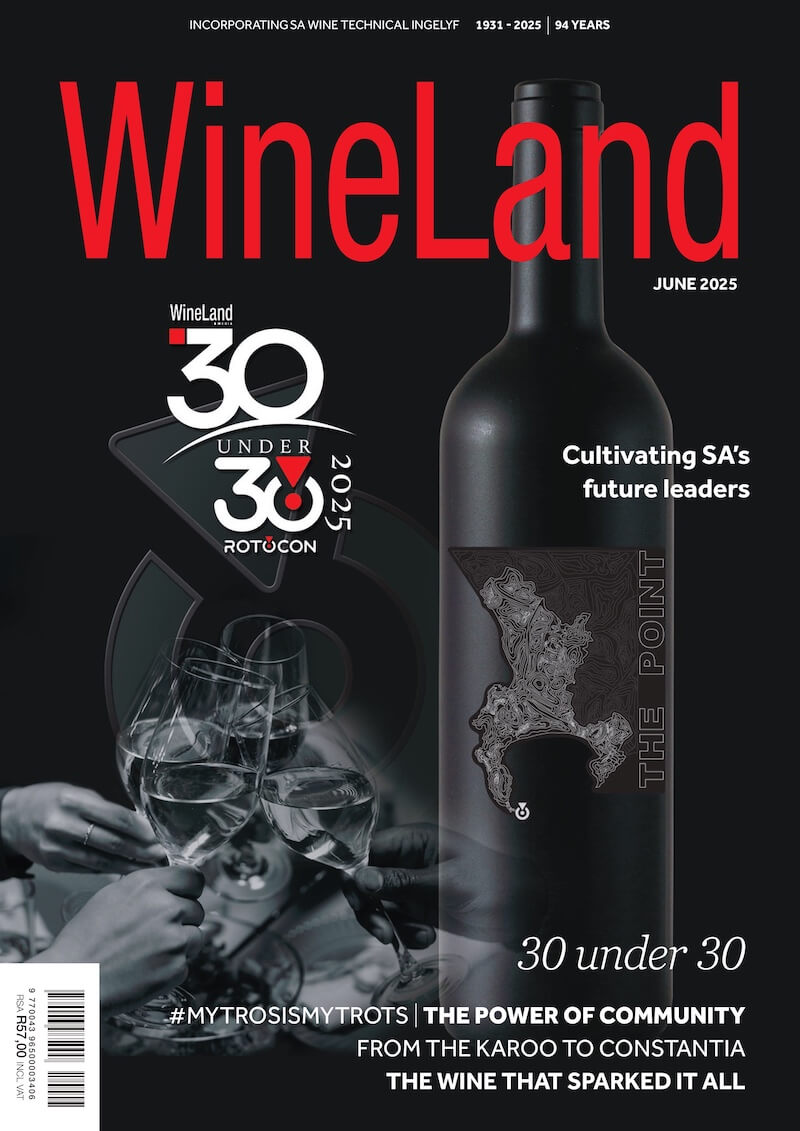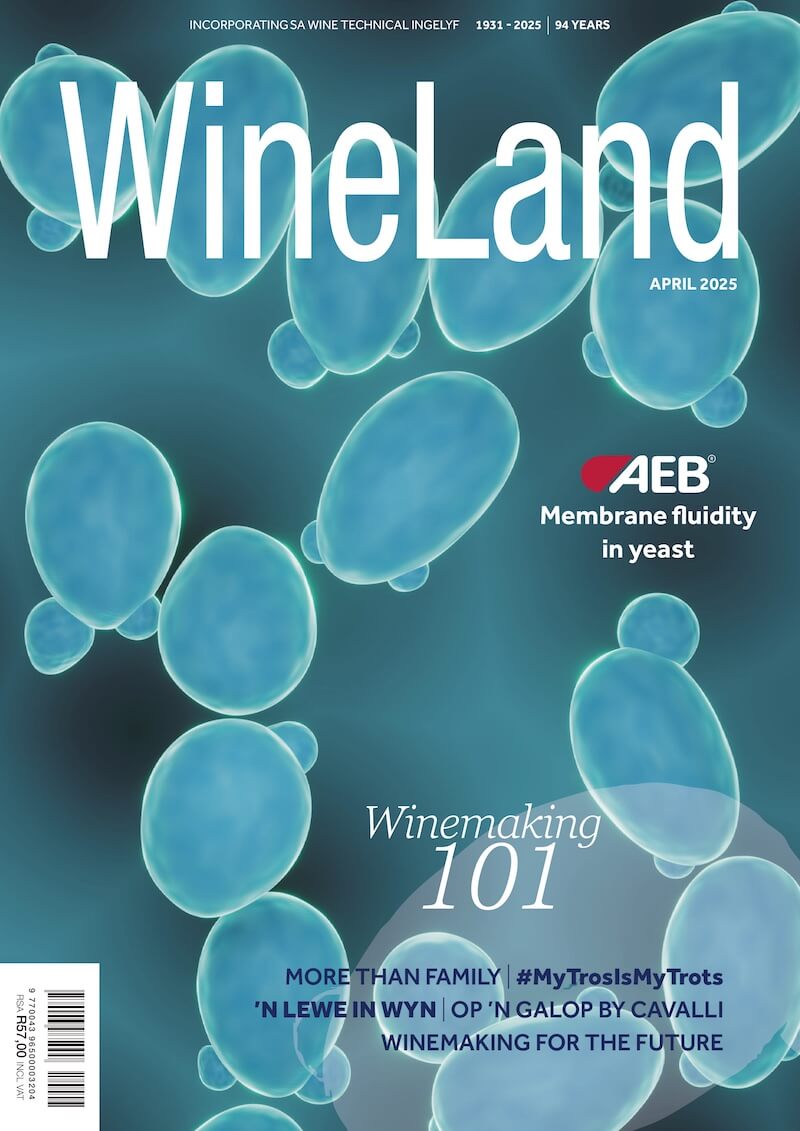Climate change affects crop production in many ways. In parts of the world, producers are shifting new plantings to higher altitudes to mitigate these effects.
This article (based on a scientific review article) takes a look at how climate change affects grapevines and explores the advantages and challenges of managing vineyards located at high altitude sites.
How is our climate changing?
Climate change leads to long-term shifts in temperature and weather patterns. Consequences further include extreme weather events, such as droughts, rising sea levels, raging fires and devastating storms.
‘According to the sixth assessment report of the Intergovernmental Panel on Climate Change (IPCC), the last four decades have been sequentially warmer than any other decade since 1850. Particularly, land surface temperature in the first two decades of the 21st century was 1,59°C higher than 1850 – 1900.
Atmospheric carbon dioxide (CO2) levels have continued to increase since 1750, and will still be around for a long time, even if we were to stop our carbon emissions.’
Local research indicates that the climate in South Africa is also changing, but how it changes varies between regions. For example, in the Breede River region, rainfall is increasing, and while maximum temperatures are increasing, minimum temperatures are decreasing, leading to more spring frost events.
Conversely, the Coastal region is becoming drier, while both maximum and minimum temperatures are rising in this region.
How does climate change affect the grapevine?
Phenology
Research in southern Australia indicated that warming average temperatures during the growing season advanced harvest by four to 11 days. Other research indicated that elevated temperatures cause all phenological stages to advance and shortened the time needed for grapes to reach optimal ripeness.
It is expected that a reduction in available water could exacerbate these effects.
Physiology
Studies show that increasing CO2 levels result in a decrease in stomatal conductance. Higher levels of CO2 do, however, contribute to increasing biomass as the effectiveness of carbon fixation increases.
This does, however, depend on how much water is available for the plant.
Grape biochemistry
Climate change leads to earlier onset of veraison and higher total soluble solids, together with a decrease in the anthocyanin to sugar ratio in grape berries. Furthermore, warming temperatures and advanced phenology leads to increased sugars and a decrease in organic acids, particularly due to malic acid breakdown, along with a shift in the composition of secondary metabolites and aroma precursors.
The extent of these effects vary between cultivars.
Change in suitability of sites for wine grape production
As climate changes, altering temperatures and rainfall, it could mean that certain areas that were renowned for producing quality grapes could become less suitable. On the other hand, regions where grapes were never grown before, could possibly become prime spots.
Vineyards located at higher altitude or elevation are known for shorter growing seasons and lower summer temperatures. These areas are expected to become warmer over time, which could allow for a wider variety of cultivars to be grown successfully in these sites.
In other places where wine grapes are currently produced, average temperatures can increase, and water availability decrease to the point where it becomes detrimental to quality wine grape production. Research in various countries using different bioclimatic indices and climatic models to simulate predictions in climate change scenarios, indicate there will be shifts in the suitability of sites for viticulture in the face of a changing climate.
Moving up
Moving grapevine production to higher altitudes could be an adaptive strategy, in certain areas, to mitigate the effects of climate change in order to maintain quality. Maize farmers in Northern Equadorian highlands have been following this approach for the last two decades.
Although temperatures are lower at higher elevation, one should keep in mind that other factors are also at play. With altitude, thermal amplitude (difference between maximum and minimum temperatures), net global radiation exchange and UV-B radiation increase too.
These variables have a great impact on phenological stages, as well as on its duration.

How does altitude affect the grapevine?
Altitude and phenology
Research has shown that worldwide an increase in altitude causes a delay in the timing and duration of phenological stages. A study in Italy evaluated the statistical correlation between altitude and the timing of budbreak, harvest and the length of budbreak to harvest interval.
Five varieties, namely Pinot noir, Sauvignon blanc, Chardonnay, Merlot and Pinot gris were included in the study. The harvest time was significantly influenced by altitude and cultivars, ranging from 6.27 to 7.16 days for every 100 m of elevation, while budbreak time ranged from 0.85 to 2.88 days for every 100 m.
In other studies, a decrease of 4°C in mean temperatures of vineyards at higher altitudes, delayed harvest by up to two months in Cabernet Sauvignon.
Higher thermal amplitude means there could be more temperature extremes such as an abnormally hot day in winter or freezing temperatures that can cause cold injury in late winter or early spring.
One downside of extended phenological stages is for example at budbreak, the vulnerable plant structures are exposed to the risk of hail damage or frost for an extended period of time during the cooler part of the growing season. On the upside, cultivars with shorter growing cycles may produce better quality grapes as the slower ripening period leads to better accumulation of aromatic and phenolic compounds by the time sugar ripeness is reached.
Altitude and physiology
Extreme climatic conditions affect grapevine physiological processes. Extremely warm temperatures can impede vegetative growth and reproductive development which impacts yield and fruit quality.
It is also known that photosynthesis is drastically reduced at temperatures above 35°C. On the other hand, extreme cold can affect fruit set and carbon accumulation in berries, as well as reduce photosynthesis.
Higher altitudes are more likely to experience extremely cold days, which poses a frost damage risk, especially during sensitive stages, such as bud break or flowering. Other studies show that increased UV-B levels lead to a decrease in leaf area and reduced berry size and fruit yield.
It also causes an increase in grape berry skin thickness as more anthocyanins (which act as photoprotective pigments) accumulate in the skin.
Altitude and grape berry composition
An advantage of cooler temperatures at higher altitudes is extended ripening periods which can benefit the grape berry composition and quality parameters. Various studies indicate that the main environmental factors that affect grape biochemistry are temperature and light exposure.
Lower net photosynthesis in leaves subjected to higher UV-B leads to a reduction in sugar accumulation. This does not necessarily equate to lower Brix at harvest, because increased evaporative losses can increase sugar concentration, while reduced berry size can have the same effect.
Research shows there is a positive correlation between elevation and the production of anthocyanins, flavanols and stilbenes which favour colour intensity, anthocyanins and aromas in the resulting wines. At cooler temperatures, there is less malic acid breakdown in berries, and the acidity in the final wine tends to be more compared to wines from grapes grown at warmer temperatures.
In a sensory evaluation of Merlot and Cabernet Sauvignon wines, made from vineyards at varying altitudes, the wines from the higher altitude sites scored highest as the quality in terms of taste and aroma intensity were better.

Effects of low temperature and high UV-B at higher altitude vineyards on grapevine phenology (A), physiology (B), grape biochemistry and wine chemical composition (C). This image was reproduced from the original article as permitted by the Creative Commons Attribution License (CC BY), https://creativecommons.org/licenses/by/4.0/.
Conclusion
Terroir and the location of a vineyard site play an important role in wine style. Establishing vineyards in higher altitude sites is not possible everywhere, but it could be a means of adapting to a changing climate and to mitigate the effect of climate change on grapevine production.
Higher altitude sites have lower average temperatures with a higher thermal amplitude and increased radiation. These factors result in a delayed growth cycle, reduction in vegetative growth and berry size, along with increased acidity and a higher concentration of anthocyanins, colour and aromas in resulting wines.
One should keep in mind that the climatic conditions at higher altitudes can present certain challenges that could negatively affect the grapevine. Cultivar selection is critical, and canopy management and viticultural practices should be carefully considered and fine-tuned to the site and ultimately the required wine style, in order to produce quality fruit.
Reference
Arias, L.A., Berli, F., Fontana, A., Bottini, R. & Piccoli, P., 2002. Climate change effects on grapevine physiology and biochemistry: Benefits and challenges of high altitude as an adaptation strategy. Frontiers in Plant Science 13, 835425.
– For more information, contact Lucinda Heyns at lucinda@winetech.co.za.
Click here to get your copy of WineLand Magazine and here to subscribe to our newsletter.













